What is the best way to get rid of geese? There are three solutions recommended by scientists: liquid repellents, goose deterrent devices or 3D predator replicas, and fencing. Liquid repellents should be used to create goose barriers around crops or valuable plants. They can also be applied to the areas where geese typically gather. According to scientists, the most efficient goose repellents are those based on methyl anthranilate and anthraquinone. These are naturally occurring compounds safe for plants and pets. While methyl anthranilate alters the taste of grass, making it distasteful for geese, anthraquinone works by causing a stomach discomfort in geese. The frightening devices keep geese away by emitting startling sounds and sprinkling water. A 3D predator replica or a swan decoy imitate the presence of geese’ natural enemies. The third option is to install fences creating a physical barrier between these birds and your garden. You can buy a ready-to-use goose fence or make it yourself using a monofilament fishing line.
Majestically flying in the sky, geese are the pleasant sight inspiring the feeling of the human unity with nature. But the things change once geese settle in the area of your property. That is when they turn into a sheer nuisance, particularly where a hundred-pound giant Canada geese are involved. These are one of the largest flying birds in the world and they are able to produce as much as one and a half pounds of feces daily. Worse still, they inflict a wide range of damage to humans and their properties, starting with provoking road accidents, attacking kids, consuming and trampling crops, to leaving feces which contaminate the area and spread diseases hazardous to humans. Because Canada geese adapt easily to most environments both in towns and suburbs, keeping them away has become more challenging.
{code 416}
How to get rid of geese? What kind of damage do they cause? What geese control methods are suggested by scientists? What goose repellent products are available on and which of them rate higher in consumer reviews. These are the issues we have covered in this review. To facilitate your choice of a goose control approach, we have supplemented the review with a comparison chart of the most recommended methods.
- Why Should You Keep Geese Away?
- How To Get Rid Of Geese: What Scientists Say
- How To Scare Off Geese
- Is Goose Repellent An Effective Method?
- TOP-10 Goose Repellents & Deterrents
Referring to geese as a pest, scientists distinguish urban ones which largely inhabit towns and suburbs. They are either resident geese or so-called migrants, with the latter spending all seasons but summer in urban or suburban areas. Canada geese, the largest ones in species, summer in Canada but as soon as it is getting cold, they head for the southern United States. So, watching geese flying in a V formation, one will get a clear message from nature that the season is changing.
Most conflicts with property owners happen in places with large congregations of geese. First of all, problems arise from a direct contact with humans. Crossing roads in search of food or water, they threaten public safety and often become causes of traffic accidents. Geese are likely to attack and nip people, particularly kids, if they believe their nest is put at risk. This may be the case even though there is no real threat to their eggs or goslings.
The reason why you should learn how to keep geese off your lawn is the extent of the harm they can cause. Scientists from the Ohio State University note that the excessive consumption of turf grass practically converts the lawn into a bare soil that leads to erosion. This may result in a considerable economic loss as the owner will have to spend extra money on replacing the grass. These pests are able to devour almost all agriculture grain crops while anything that has not been eaten may be trampled by geese. In spring, the damage can be appreciable for farmers growing cereal grains and sunflowers. In fall, swathed grains are typically consumed or trampled while, in winter, wheat crops are endangered. As a rule, geese forage in large groups, which is why the damage is tangible, be it agricultural fields, lawns or gardens.
But most of all, geese are known as a nuisance pest. They drop feces around in a casual manner contaminating soil in parks, lawns, patios and many other public spaces as well as private premises. The amount of the accumulated faces may be so considerable that a severe situation arises where people begin to avoid visiting these areas. Apart from that, goose feces contain pathogens which can contaminate water and cause human diseases if such water is injected. As scientists from the Center for Surgery, Naperville, put it,, due to the increasing number of Canadian geese population, such healthcare problems as botulism and salmonella emerge in the areas of large congregations of geese. This also results in the necessity for extra spending on the treatment of water coming from reservoirs where geese gather.
Long-term solutions are the best ones as they allow to permanently solve the problem. So, if you are considering how to keep geese away, the first move in your strategy should be habitat modification with the aim of removing food and water sources attracting geese. Once these pests find out that there is nothing in your lawn to satisfy their needs, they will lose interest to the location and stop visiting it.
Primarily, do not practice hand feeding of geese and convince your neighbors not to do it either. This may sound strange, but feeding geese increases their aggressiveness and provokes them to attack people as they get accustomed to receiving food and become angry when denied it. But most importantly, hand feeding habituates geese to the location and makes them perceive it as a source of easily accessible food. The next move is getting rid of waterfowl decoys from ponds and pools because they attract geese and for this reason are popular among hunters. Perhaps the most important measure to be taken is to alter the landscape to make it less appealing to geese.
“From a Goose’s point of view, a mowed grassy lawn leading to an open body of water is ideal habitat. Ponds provide a safety zone and lawns provide plenty of food with little cover for potential predators. Any deviation from this will make geese uncomfortable and less likely to use the area. So, eliminate grassy slopes providing an easy access to the pond and create a steep bank with the height of at least three feet along the perimeter. Apart from that, take an advantage of the tall grass which will serve as an additional obstacle. Put together, these measures will deter geese from using the location, particularly those with goslings. You may also plant vegetations which are disliked by geese, such as tall fescue causing stomach distress after ingestion. Tall prairie grass planted along shorelines makes geese feel unsafe as they cannot see and properly assess the situation and detect the potential presence of a predator. However, geese may adapt to it, then you will have to expand the plantations. One of the most efficient solutions is to surround the pond with trees as this will deprive geese of an open area to land and will prevent sunlight from penetrating through the branches making the grass less enticing to geese.
Exclusion. Another long-term approach is exclusion or creating artificial barriers preventing geese from entering the forbidden zone. At this point, the best option for you is erecting a fence. Scientists from the Cornell Cooperative Extension at the University of Wisconsin Cornell Cooperative Extension at the University of Wisconsin recommend barriers made from mylar tape, metal mesh, plastic netting, wood such as corn cribbing, as well constructions from monofilament and steel wire.
Be sure that openings do not exceed three inches and the fence is not less than thirty inches in height. If you decide on mylar tape, make sure that the strands are supported every twenty feet and the mylar is secured to the posts. Make the fence as long as possible in order to rule out the possibility of geese walking around it. However, the major drawback for all kinds of fences is that they will not stop flying geese from getting into the prohibited zone. This is also the case with electric fences but the advantage of this type of constructions is that they deter by a shock. What makes against electric fences is the power consumption resulting in extra expenditure. Also, electric fences should be regularly checked with a voltmeter to make sure the system is functioning properly. You should also clear the grass around the construction to exclude the possibility of a contact with the strands. A good option will be using a solar-powered fencing.
Experts suggest constructing a wire grid above the surface of water so that geese will not be able to land there. Another solution is building barriers of large stones which are not less than two feet in diameter. Place them randomly along the water surface and geese will not be able to freely walk from the grassy area to the water. You may create two barriers: one of the tall grass and the other made of stones.
Scare tactics are particularly popular with landowners because geese can be easily frightened, be it any unknown object or noisemakers. However, this is a short-term solution and in order not to let geese get used to these devices, change their location from time to time. Also, take into consideration that you will have to get a special federal permit to be allowed to frighten nesting geese.
Nell Orscheln from the Clemson Extension Service suggests using noise-making devices only in sparsely populated areas, otherwise, loud noises may disturb the residents. Such techniques include pyrotechnics, screamers, firing blanks, air horns, whistles, as well as recorded goose distress calls. Be sure you follow the manufacturer’s instruction when using noisemakers as they may threaten the human health if handled improperly.
Propane cannons work by producing loud blasts and in the quantity of four items can protect an area of about twenty-five acres. Pyrotechnics should be fired to disturb a group of geese on land or water. Try recording and then playing back loud distress calls of the geese inhabiting the area. However, distress calls will work only when other methods are engaged so that geese will not habituate to them.
Experts with the Pennsylvania State University advise placing visual devices such as balloons at a three-acre interval and before geese have settled in the area. The strong point of visual goose deterrents is that they can be installed in any urban or suburban area without disturbing neighbors. Let’s have a look at what kind of visual deterrents are offered to keep geese away. First, try a so-called scare tape with a width of half an inch, colored in red on one side and silver on the other. It can be tied to a fence to enhance the efficiency of goose control. Another solution is to put garbage bags on poles what should ward off geese from landing in that location.
A good but quite expensive idea is to engage remote controlled boats or aircrafts. If you still decide on this option, remember that these devices should be applied as goose deterrents only and any physical contact must be avoided. Stake helium balloons in the lawn or over water, with the size not exceeding two feet in diameter, otherwise, they will resist to the wind. Those with eye spots are considered to repel geese better. Among other recommended goose deterrents, there are swan decoys which should be placed in number of at least four items to imitate the presence of a swan family. A traditional scarecrow will keep geese away in case it moves, has a bright color and large eyes.
The dog, man’s best friend, will also have a chance to do a favor to its owner. They are often engaged in deterring geese from golf courses and will readily protect the private area surrounding the house. But this solution will be effective only if geese see the dog frequently what will discourage them from returning to the location.
Chemical goose repellent should be applied to the sites where lots of geese usually gather and it is preferred by many homeowners because of not being dangerous for geese. The main drawback of this method is that its effect does not last for a long time and there is the need for repeated applications. On average, the product should be sprayed approximately every five days, with additional applications after heavy rains.
Scientists from the Ohio State University say that there are effective goose repellents registered by EPA — methyl anthranilate and anthraquinone. These compounds are naturally occurring chemicals without hazardous residue. Methyl anthranilate works through affecting the taste of the grass so that it repels geese. Products based on anthraquinone target digestion of geese causing a stomach discomfort. These substances are not washed off with the rain while mowing reduces their effect. A drawback for these solutions is that they come at a high cost, particularly when a large area needs to be sprayed. If not to treat the entire area available to geese, they will find the patches which have not been sprayed and all your efforts will be in vain.
Effectiveness Scale: 1 being the least, 10 being the most effective.
Method
Type
Advantage
Disadvantage
Reducing food availability. Effectiveness: 9
habitat modification
Geese lose the habit of visiting the site; long-term solution
Effective only in a combination with other methods
Altering the landscape. Effectiveness: 10
habitat modification
Geese feel unsafe and uncomfortable, lose the habit of visiting the site; especially deters geese with goslings; long-term solution
Labor-consuming; reduces accessibility to the pond for humans as well; tall grass is a favorable environment for many pest insects.
Fencing. Effectiveness: 10
exclusion
Very effective if constructed properly; not expensive; electric shock is an additional deterrent; keeps geese away without harming them
Geese may fly over the fence; labor-consuming; except for fences made from wood, is not in harmony with the surrounding landscape; electric fences are energy-consuming
Noise-making devices (pyrotechnics, distress calls etc). Effectiveness: 8
Frightening
Popular because geese are easy to frighten; make geese believe that the site is unsafe
Not recommended for densely populated areas as noises will disturb people; special federal permit is required to frighten nesting geese; hazardous to humans if not handled properly; short-term solution; geese habituate to scare tactics
Visual goose deterrents (scare tapes, balloons, swan decoys). Effectiveness: 9
Frightening
Can be placed in any urban or suburban area without disturbing its residents; popular because geese are easy to frighten; there is a wide choice of visual deterrents; visual deterrents can be handmade
Geese have to see the deterrents frequently, in different positions and places as they easily get used to them; short-term solution
sprays (methyl anthranilate, anthraquinone). Effectiveness: 10
repellent
Effective when applied to the sites of large congregations of geese; does not harm the geese; there are two compounds suggested by scientists: methyl anthranilate and anthraquinone; do not have dangerous residue; not washed off with rains
Mowing reduces the repellent effect; expensive, especially for large areas; short-term solution; should be re-applied every five days
TOP-10 Goose Repellents & Deterrents
Below you will find 10 products useful for keeping geese out of the property. A monofilament fishing line is good for creating a physical barrier while a huge goose fence will be a ready-made solution for you. There are two goose deterrent devices, one of which scares geese off by the startling sound and sprinkled water while the other emits a wide range of noises including those produced by predators and cars. A hand painted swan decoy will not only serve as a goose repellent but also as an excellent decoration. A 3D predator replica with a moving fluffy tail looks very realistic and frightening. A holographic scare tape reflects the light in every direction what frightens geese. Two options of liquid barriers based on natural ingredients vary in prices and the area coverage.
Berkley Trilene Big Game Monofilament Custom Spool
Scientists recommend using a monofilament fishing line in creating barriers for geese. As experts put it, the advantage of a monofilament line is that it is strong and unobtrusive. The product is available in different colors ranging from silver, blue to brown and green so that you can pick up the option which will be in harmony with the landscape. The line is extra tough and can be used underwater and is resistant to shock and abrasion.
How to construct an effective barrier using the monofilament fishing line? According to the Wisconsin University experts, a fence should be made from five lines set at four, eight, twelve, eighteen, and twenty-four inches above the ground. The closer the lines are, the less is the chance for goslings to get through the barrier.
The monofilament fishing line has gained 4.5 out of 5 stars, with over 700 customer reviews. Judging by the feedback, the line is widely applied in arranging all sorts of barriers for wildlife. For example, one user has strung it from the roof to the fence line above a pond to deter herons. “I used it to deter deer from entering my garden, and it works great!” the other customer says.
Price: Check the current price
4′ x 100′ Freedom Goose Fence
If you need a full-fledged goose fence, this option is definitely for you. All is needed is to fix it to the posts or any other supporting structure. The fence is designed specifically for keeping geese out of the protected area, therefore, it is high enough to prevent the geese from flying over it and is wide enough to protect such places as a pond. Besides, other sizes are available, however, they are pricier. There are options of 5 feet by 330 inches, 6 feet by 100 inches and 7.5 feet by 330 inches. The prices change respectively.
It is made from durable materials with UV inhibitors. Although the fence is a sturdy construction, it is lightweight and easy to handle. The goose fence is a new product on and has gained just one five-star review. It seems that consumers need some time to appreciate the product or, on the contrary, highlight its drawbacks.
Price: Check the current price
ScareCrow Motion Activated Animal Repellent
A traditional scarecrow is a good goose deterrent but the motion-activated one is much better. This one is designed to deter a number of animals and geese as well. The device scares geese both by the startling sound and water so that they are driven out of the area after coming in contact with it and will avoid the site in future. A sudden blast of water frightens but does not harm geese while special sensor lens detect them easily. The device can function at any time of the day or night and in any season. With over 12 inches in height, it covers 1,200 square feet operating on a battery lasting for six months.
The product rates 3.4 out of 5 stars, with most of the customers giving it either five or four stars. The total number of reviews is particularly noteworthy as it amounts to 3,700 customer reviews, most of which are positive. “The geese get a harmless spritz and are so flustered and surprised, they move on to the next house,” one of the users say suggesting that several devices should be bought and tied together to cover a large area. Another customer tells how he has managed to get rid of geese which used his patio as a latrine: “I positioned the scarecrow as a perimeter guard between the lake and our patio and within 24 hours they got the message and leave their gifts far away.”
Price: Check the current price
Ultrasonic Solar Outdoor Pest Repeller
The repeller scares off geese and other animals with its strobe lights, predator noises, gunshot sounds or car alarm noises emitted by 135dB speakers. The installed solar panel makes the device environmentally friendly and helps you save energy. Moving geese are detected by a PIR sensor within thirty feet, however, if you need to protect a larger area, consider purchasing two and more devices. The repeller can be placed on poles or fixed to the wall depending on where the route of your target is.
Repeller has gained 4.0 out of 5 stars. “The product was easy and quick to install. It continues to effectively drive away all rodents and animals from damaging my lawn,” one consumer commented. “The product has met beyond my expectations and I would strongly recommend this product to anyone who has trouble with keeping animals away from the lawn,” the other user wrote. One more customer noted that an on/off switch on the outside of the device would be preferable.
Price: Check the current price
Predator & Swan Decoys
Using decoys you will deter geese without resorting to chemicals or noisy devices, nor will you harm them. However, as we mentioned above, scientists recommend that scare decoys should move all the time to make the geese feel unsafe and not let them habituate to the models. Among predator decoys, those of coyotes, wolves and foxes are largely in demand. Swans are aggressive when protecting their young and territory from intruders and this fact forces geese to stay away. You should understand that decoys is not a sufficient measure to deter geese and other techniques have to be implemented as well. But this kind of deterrent does the job and will be an efficient part of your goose control strategy.
Flambeau Floating Swan, a graceful hand painted decoy, is a nice decoration to your pond and, at the same time, an efficient goose deterrent. The decoy is made of durable plastic and can either float freely or be tied and located in a certain place. Take into consideration that using several such decoys significantly improves the results as in wildlife a pair is more territorial than a lone swan. The swan decoy rates 3.9 out of 5 stars. “Definitely helped keep the geese out of our community pool. Now, if we could only keep the residents from playing with it..” one customer commented. However, some users note that these plastic swans have been ignored by the local geese even though floating in a pair.
3D Coyote Replica with a moving fluffy tail looks very realistic and frightening. It will be easily spotted by geese from a distance scaring them out of the area. However, this coyote replica has turned out to be less popular among users than the swan decoy, rating just 2.8 out of 5 stars. From the consumers’ experiences, this coyote decoy really does a fair job of keeping geese away. Get creative to enhance the decoy’s performance: “A few times I ran towards the geese with the coyote in hand, which really scared them and that completely drove them away,” one customer wrote.
Flambeau 5889LO Floating Swan, 1-Pack. Price: Check the current price
Bird-X Coyote 3-D Predator Replica. Price: Check the current price
Bird-X 3D Fox Predator Decoy for Goose. Price: Check the current price
Liquid Fence Goose Repellent
The liquid fence repels geese and is based on natural ingredients including methyl anthranilate. When applied to the soil, the product alters the taste of the grass on the lawn making it unpleasant for geese to consume. Eventually, the liquid works not only as a repellent but also as the way of habitat modification because geese will be forced to look for another location to feed.
Liquid Fence 1466X is a ready-to-use goose repellent spray. It is said to protect up to 4,000 square feet of the area visited by geese. However, it seems that the liquid barrier is not popular with users gaining just 1.8 out of 5 stars. A portion of the buyers is dissatisfied with the spray’s impact on the behavior of geese. Others claim that the coverage does not match the label description: “It has been a couple of weeks since I put it out and so far no geese. However, it said it would cover 4000 square feet. It was spraying very good but did not come close to 4000 sq ft before it was empty,” one consumer wrote. The users are not unanimous on the residue period of the product, with some claiming that it lasts over the course of the entire season and others urging that the residue is no more than two weeks.
Liquid Fence 148 is a gallon of the concentrated liquid which is more expensive than the previous one but it covers a much larger area — up to 16,000 square feet. So come to think of it, you may even save money on purchasing this repellent in case the area you are going to spray around is large enough. As we mentioned before, it is impractical to treat just a part of the territory because geese will figure out that the palatable grass remains on some patches of land. The concentrate has gained 3.1 out of 5 stars. As one of the consumers noted, “this stuff seems to work best when you apply a lot of it”. He added that the success may also depend on the feeding cycle of geese entering the area.
Liquid Fence 1466X Goose Repellent Spray, Ready-to-Spray, 1-Quart. Price: Check the current price
Liquid Fence 148 Goose Repellent, 1-Gallon Concentrate. Price: Check the current price
De-Bird Bird Repellent Scare Tape
This bird scare tape is intended to scare off geese from lawns, patios and other property. It is a double-sided holographic tape which reflects light in every direction. Placing the tape in the yard, you kill two birds with one stone as the material functions both as a visual and sound deterrent. Another advantage is its huge length amounting to 200 feet what makes it possible to cover the entire patio if needed or can be put at the top of trees. However, it is not sticky, so you will have to tie it to something.
The tape has gained 4.0 out of 5 stars. Some users point to the fact that this is a temporary solution in dealing with geese. “Bought this to keep the geese of my yard and out of my garden. Worked for about a month and now they are back,” one customer wrote. Others have achieved more sustainable results. “One month with the tape and I have not seen a single goose come even close,” another customer indicated.
Price: Check the current price
10 Goose Repellent & Deterrent Comparative Chart
| Product | Type |
| Berkley Trilene Big Game | monofilament fishing line |
| Freedom Goose Fence | physical barrier |
ScareCrow Motion Activated Animal Repellent  Check Price | deterrent device |
| Flambeau 5889LO Floating Swan | swan decoy |
| 3D predator decoy | |
| Bird-X Fox | 3D predator decoy |
| Liquid Fence 1466X | repellent spray |
| repellent concentrate | |
| De-Bird | bird repellent scare tape |

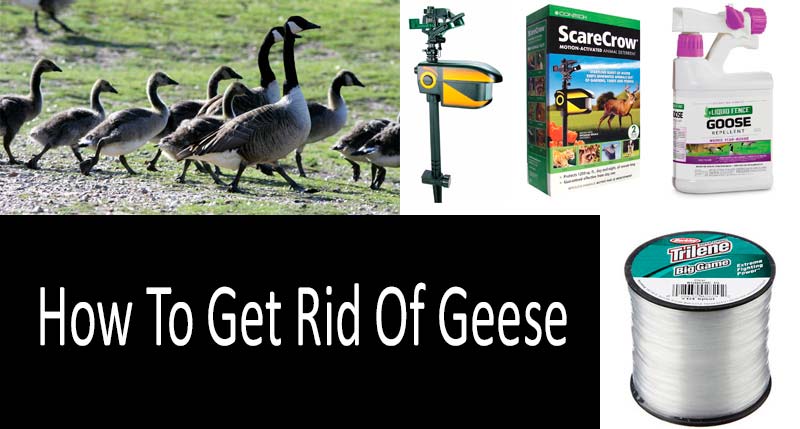
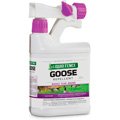
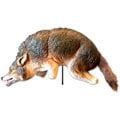
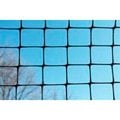








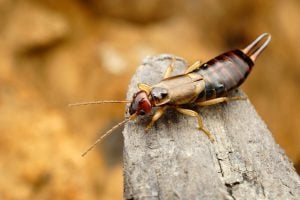
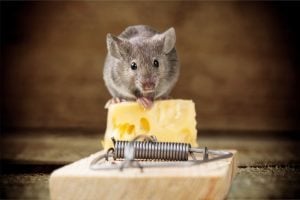
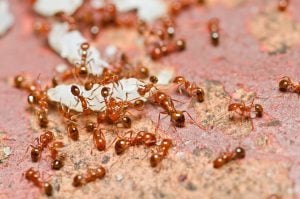

1 thought on “How To Get Rid Of Geese”
Nice one! Useful